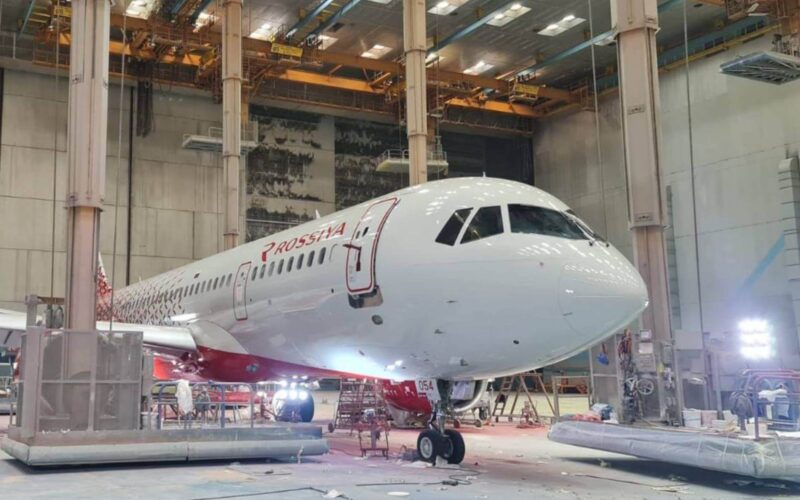Several photos of the first Irkut MC-21 narrow-body airliner painted with Rossiya livery surfaced online ahead of the aircraft’s delivery.
The aircraft, registration 73054, was painted in a hangar at Spektr-Avia in Ulyanovsk, Russia.
The exact delivery date remains unclear.
In late 2021, after long delays, it was announced that delivery was scheduled for September 2022. However, in September 2022, Russian Deputy Prime Minister Denis Manturov said the delivery had been pushed back to 2025 due to the necessity to “fully Russify” the aircraft by removing all foreign-made parts.
The new photos were first posted by Stewardess_Notes Telegram channel in the evening of November 23, 2022, and likely to have been taken after November 10, when the aircraft flew from Moscow (MSK) to Ulyanovsk (ULY).
First of many
Even before some of the harshest sanctions in the world were placed on Russia, the country’s aviation industry had high hopes for the MC-21.
Intended to compete with the likes of the Boeing 737 MAX and the Airbus A320neo, the latest iterations of the most mass-produced airliners in the world, the MC-21 was poised to become the flagship of Russian aviation.
It received its first orders soon after being announced in 2010, with Aeroflot becoming the launch customer.
In 2021 Aeroflot’s subsidiary Rossiya signed an agreement to receive the first shipment of MC-21s.
The initial order was soon expanded several times over. Furthermore, in September 2022 Aeroflot went on to announce its largest-ever order of Russian-made aircraft, opting to purchase 339 Russian-made jets, 210 of which were MC-21s.
Endless delays
However, the aircraft’s road to launching its first commercial flights has been, and remains, exceedingly bumpy.
While initial plans envisioned deliveries by 2016, the development was beset by numerous delays. Some of which were a result of Russia’s policy of import substitution which envisioned removal of as many foreign-made components as possible.
This spelled trouble for the aircraft, which was developed with a high degree of international integration in mind, as many of MC-21’s critical components, such as composite wings, engines and avionics, were intended to be made by European and American companies.

